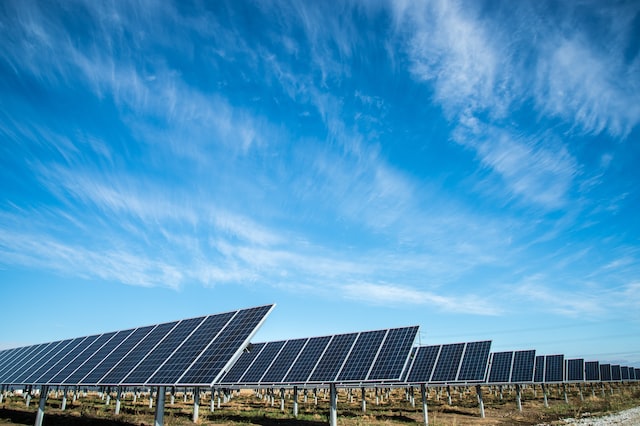In a world grappling with the consequences of climate change, the pursuit of sustainable and clean energy sources has become more critical than ever. Renewable energy is at the forefront of this endeavor, offering a beacon of hope in our quest to reduce carbon emissions and transition towards a greener future.
The Rise of Renewable Energy
The 21st century has witnessed a remarkable transformation in the global energy sector. While fossil fuels have long been the primary source of energy, their environmental consequences have become impossible to ignore. The burning of coal, oil, and natural gas releases vast amounts of greenhouse gases into the atmosphere, contributing significantly to global warming and its devastating effects.
In response to this crisis, renewable energy sources have gained prominence. These energy sources harness the power of nature’s elements—sun, wind, water, and even geothermal heat—to generate electricity and heat without the harmful emissions associated with fossil fuels.
Types of Renewable Energy
Solar Energy
Solar energy is perhaps the most recognizable form of renewable energy. It utilizes photovoltaic cells to convert sunlight into electricity. The sun’s energy is abundant and inexhaustible, making solar panels a popular choice for residential and commercial applications. From rooftop installations to vast solar farms in deserts, solar power is a shining example of clean energy.
Solar energy offers several advantages, including reduced electricity bills, lower carbon footprint, and increased energy independence. It’s a versatile solution that can be harnessed virtually anywhere there’s sunlight, making it accessible to both urban and rural communities.
Wind Energy
Wind turbines are another iconic symbol of renewable energy. These towering structures capture the kinetic energy of the wind and convert it into electricity. Wind power has seen substantial growth, with wind farms sprouting up across windy regions globally.
Wind energy is clean, sustainable, and has a minimal impact on the environment. However, it does require careful planning to minimize disruption to local ecosystems and address concerns about aesthetics and noise.
Hydropower
Hydropower, or hydroelectric power, uses the energy of flowing water to generate electricity. It’s one of the oldest forms of renewable energy, with hydroelectric dams dating back to the late 19th century. By channeling water through turbines, this method produces a reliable and constant source of power.
While hydropower is clean and efficient, it can have significant ecological consequences, including habitat disruption and altered river ecosystems. Modern hydroelectric projects strive to mitigate these impacts through sustainable design and management practices.
Geothermal Energy
Geothermal energy taps into the Earth’s natural heat from within. It involves harnessing steam or hot water from underground reservoirs to generate electricity and provide heating and cooling for buildings. Geothermal power plants are commonly found in regions with high geothermal activity, such as Iceland and parts of the United States.
Geothermal energy is reliable, with a continuous energy supply, and it has a low environmental impact compared to many other energy sources. However, it’s location-dependent and not as widely accessible as solar or wind energy.
The Benefits of Renewable Energy
Renewable energy sources offer a multitude of benefits that extend far beyond reducing greenhouse gas emissions. Here are some key advantages:
Environmental Sustainability: Perhaps the most significant benefit of renewable energy is its minimal impact on the environment. Unlike fossil fuels, renewable sources don’t release harmful pollutants or greenhouse gases into the atmosphere, helping combat climate change and air pollution.
Energy Independence: Renewable energy sources are often decentralized, allowing communities and countries to reduce their reliance on imported fossil fuels. This enhances energy security and reduces vulnerability to energy price fluctuations.
Job Creation: The renewable energy sector has become a significant source of employment. From manufacturing and installation to maintenance and research, it provides jobs across various skill levels and regions.
Technological Advancements: The pursuit of renewable energy has driven innovation and technological advancements. This not only improves the efficiency and affordability of clean energy but also spurs economic growth.
Sustainable Development: Renewable energy aligns with the principles of sustainable development, fostering economic growth while safeguarding the environment and meeting the needs of present and future generations.
Overcoming Challenges
While renewable energy offers immense promise, it’s not without its challenges. Some of the obstacles include:
Intermittency: Solar and wind energy are intermittent, depending on weather conditions and daylight hours. Effective energy storage solutions are crucial to ensuring a consistent power supply.
Infrastructure and Costs: Transitioning to renewable energy requires substantial investments in infrastructure, such as wind farms, solar arrays, and grid enhancements. However, the long-term benefits often outweigh these initial costs.
Storage Technology: Developing cost-effective and efficient energy storage solutions, like advanced batteries, is essential for maximizing the potential of renewable energy sources.
Regulatory Hurdles: Regulatory frameworks and policies can either facilitate or hinder the growth of renewable energy. Governments must create supportive environments through incentives and regulations that promote clean energy adoption.
The Path Forward
The transition to renewable energy is an essential step in combating climate change and ensuring a sustainable future for generations to come. It requires collaboration between governments, industries, and individuals to invest in clean energy technologies, improve energy efficiency, and reduce carbon emissions.
As consumers, we can also play a role by adopting energy-efficient practices, supporting renewable energy initiatives, and advocating for policies that prioritize sustainability. Together, we can harness nature’s power to create a cleaner, greener world for all.
In conclusion, renewable energy represents a beacon of hope in our fight against climate change. By harnessing the power of the sun, wind, water, and Earth’s heat, we can reduce our reliance on fossil fuels, mitigate environmental damage, and pave the way for a more sustainable and prosperous future. It’s a journey that requires collective effort and unwavering commitment, but the rewards are well worth the investment.


